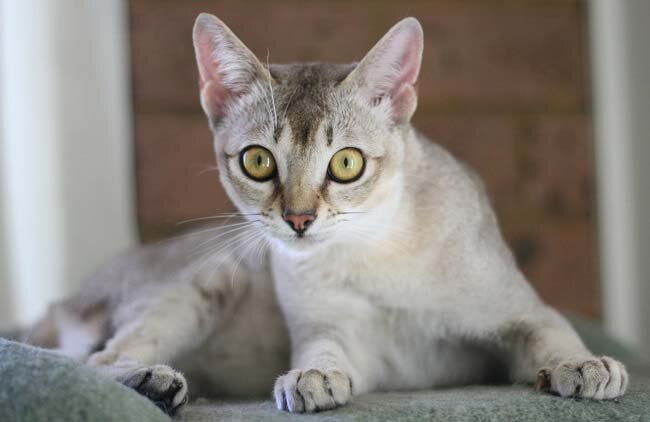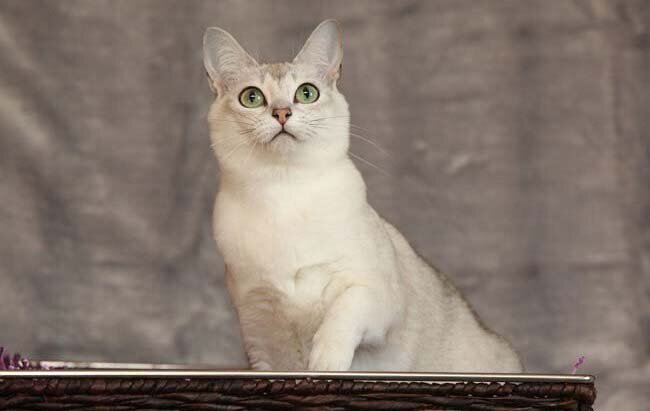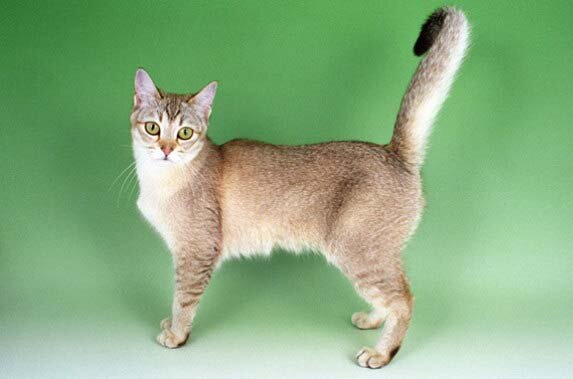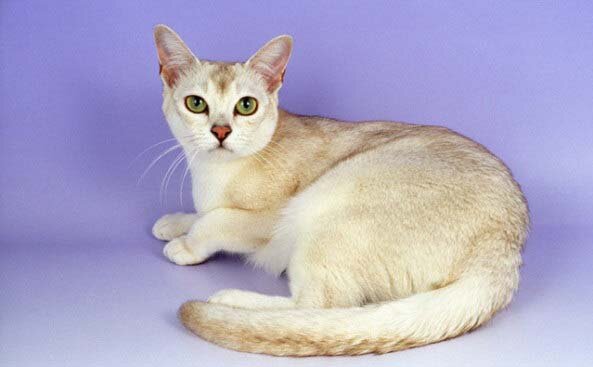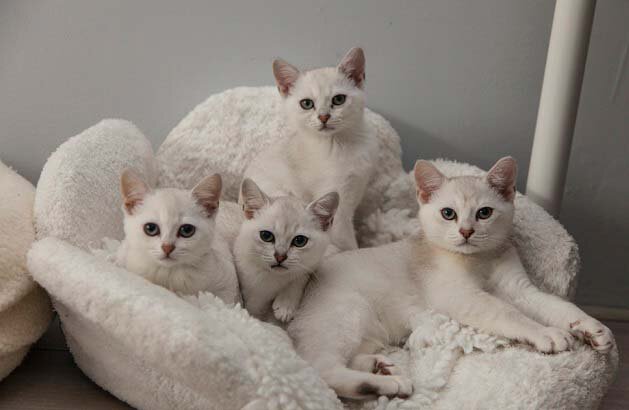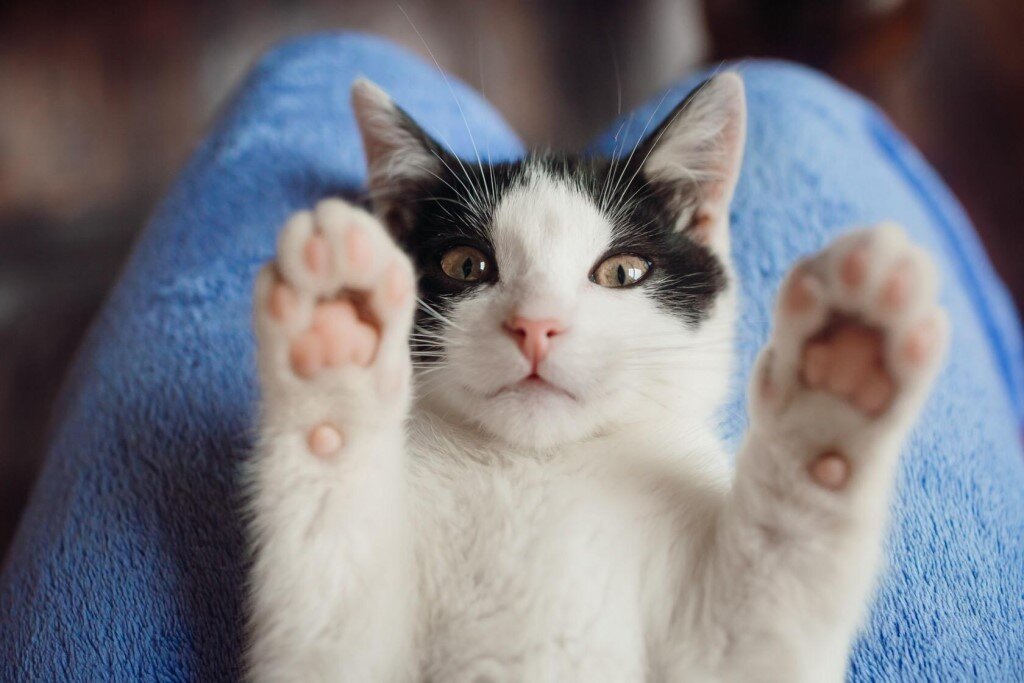Origin story of the breed
Burmilla (English. Burmilla) - is just one of the names of the noble Englishwoman. Otherwise, this breed is also called Burmese Silver.
And here is the origin story of the breed - this is the feline version of the novel "Jane Eyre." As hinted, the birthplace of the breed is Great Britain. A resident of Albion's Mist, Miranda von Kirchberg, singled out among all cats the Burmese and Persian breeds. They were plentiful in the baroness' estate.
One of the Persian chinchilla breed cats was gifted by an English aristocrat to her friend. Nothing foretold of trouble (so, undoubtedly, Charlotte Bronte would have written in her novel), but then the baroness' friend decided to give the cat a "gift"... his castration.
An inner voice prompted the Persian to flee and in search of freedom, a charming Burmese breed cat was discovered in the backyard of the mansion.
A passion flared between them and, disregarding all conventions, the cat and the cat decided on a desperate step!
After the allotted time, kittens were born, resembling their freedom-loving father. And after some time, the kittens changed significantly - their fur completely changed its appearance, and there was no trace of their father's character.
Thus began the new breed of Burmilla = Burmese + chinchilla.
And the novel is not over yet, because the breed is young (this story only happened in 1981) and to be continued!
The result of forbidden love, cats of the Burmilla breed, are themselves like the embodiment of the most beautiful feeling on earth! Wisdom and grace are wonderfully proportionate in them. And this can be said about their appearance and character!
- Medium-sized head, round in shape, of wise content. The muzzle is short and wide, with prominent cheeks. Interestingly, male cats are much "chubbier" than female cats:
- ears are widely set, tilted forward;
- eyes are large, set far apart, with black outline around the eyes. The eye shape is oriental, crescent-shaped. The breed standard defines permissible eye colors: green shades, amber color, or tortoiseshell. The reddish eye color is more characteristic of adolescence. Between the eyes, a dark letter "M" can be discerned - this is a remnant of the tiger coloring of ancestors;
- some representatives of the breed have disqualifying traits that do not affect the love for the animal but may affect breeding. One such trait is a bump on the nose;
- A Burmilla kitten has such a body structure that it is destined for success;
- Representatives of this breed are very well-built, with a strong skeletal structure and noticeable muscles. The sizes are often average;
- A brief description of the limbs - spindle-shaped, powerful. The front legs are shorter than the hind legs. The paws are round, with always black pads;
- The tail is not short, usually semi-long or long. The thickness of the tail is moderate, tapering towards the tip.
The weight of the animal with the melodious name Burmilla ranges from 4 to 7 kg. The peculiarity of the breed is that males and females weigh almost the same! Among other cat breeds, such weight equality is not observed.
- Fur - delightful! Moreover, one type of Burmillas has delightfully short fur, while another has delightfully long fur. By the way, shorthaired Burmillas are more popular than longhaired ones. They have closely fitting fur to the body with noticeable tipping, which can be red, cream, lilac, and of course, unclean silver color. A golden or silvery undercoat gives the fur a lifted appearance. The fur on the back is always darker than the fur on the animal's belly.
Main colors:
- Smoke (brown and lilac);
- Shaded (chocolate or black);
- Solid color (cream, black British, black tortoiseshell, Bombay);
- Tabby color (mackerel-blue, mackerel-black).
Overall, the fur coat of a Burmilla creates the deceptive impression that a gray or white cat has draped a darker silk shawl - the beauty is incredible, only pictures can capture the Burmilla!
Character
A Burmese mother and a chinchilla father passed on to their offspring inexhaustible energy and the same tenderness. Burmilla kittens are always in the mood for play and little pranks. As they mature, cats become more serious, but not to the extent of sleeping for days on end. No, Burmillas always need to be aware of everything happening in the house, so whatever you do, the cat is always nearby, commenting and leaving its feedback on what's happening.
By the way, the character of cats of this breed is very curious, so Burmillas often get involved in "stories" more than others.
They also treat humans with great respect and will not allow themselves to harm a human in any situation. Even if a human child pulls their tail, even if a grown human trims their claws or, God forbid, covers their eyes.
IMPORTANT! Burmillas do not tolerate loneliness - do not leave them alone for long or lock them in an empty room. The animal will suffer and get sick.
Health
The genes of Persian ancestors played a cruel joke only in that Burmillas are susceptible to polycystic kidney disease. Cysts that can form in this organ theoretically lead to kidney failure, but practically, with proper care and nutrition, kidney problems can be avoided.
How to identify polycystic disease in a pet? Clinical symptoms include lethargy, loss of appetite, frequent urination, weight loss.
However, the problem can be identified and accurately diagnosed through blood tests and X-rays.
No other genetic diseases are observed in cats, so Burmilla can be called a long-lived cat.
The charming English cats have a lifespan of 15-18 years. The main thing is not to forget to perform preventive de-worming procedures, keep fleas at bay.
Care
Caring for a Burmilla cat is minimal. The animal's fur is of such excellent quality that it is enough to groom the pet once a week.
Get the Burmilla used to weekly ear cleaning.
Most Burmillas strongly dislike the nail trimming procedure, so the best solution would be a scratching post or nail caps.
Clean ears, neat manicure, well-groomed fur... What does a Burmilla look like? Like a beauty from a beauty salon!
Feeding
Feeding a Burmilla correctly is very easy. The main rule is not to overfeed. Because for a petite cat, the price of losing their figure is great mental suffering.
Overall, feeding is standard, like for all cats. Do not offer adult English cats milk, they may like it, but they do not digest it literally. It's better to treat the Burmilla more often with kiln dairy products.


